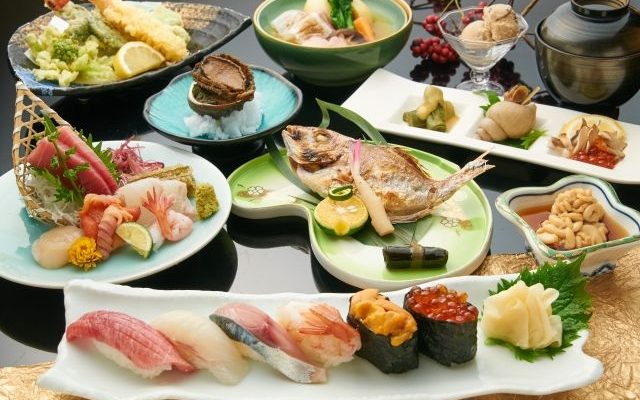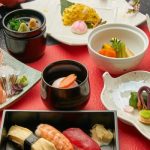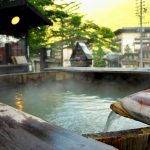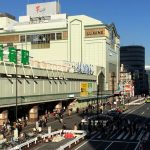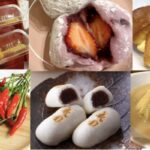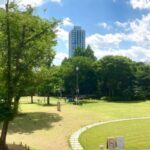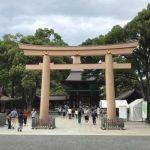Japanese foods foreign tourists must try!
Japanese food can be roughly divided into two categories. One is “informal Japanese food” such as “washoku” that Japanese people usually eat. The other is a high-class “formal Japanese food” Kaiseki (懐石) or kaiseki-ryōri (懐石料理) which is a traditional multi-course Japanese dinner. The overwhelming popularity among Japanese and foreigners are “informal Japanese food” such as ramen, okonomiyaki, pork cutlet and more.
There are so many low-priced but very tasty local food restaurants in Shinjuku. Don’t leave Japan without trying!!
● 寿司 Sushi
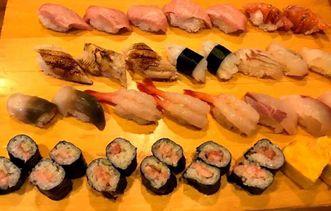
Sushi is a dish made with vinegared rice to keep the ram fish fresh.
There are 5 main types of sushi: Nigiri-zushi, Maki-zushi, Oshi-zushi, Chirashi-zushi, Inarizushi
Nigiri-zushi is the general term people use to call “Sushi”. Meaning “hand-pressed sushi”, formed into a rectangle, with a swipe of wasabi, and adding a topping like salmon, tuna or another seafood.
● 刺身 Sashimi

Sashimi means “pierced body”, a piece of meat that is usually a raw slice of seafood but is not always seafood nor always raw. Since this item is uncooked it is enjoyed in the same was as Sushi for the quality and it’s freshness, if prepared correctly.
Most sashimi are served with soy sauce with wasabi paste or ponzu sauce.
● 天ぷら Tempura
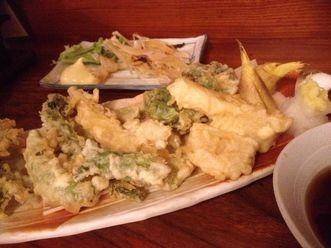
Tempura is deep-fried seafood and vegetables, which are pre-coated with batter.
The batter of tempura is made from flour, eggs and water.
We eat it with a dipping source called Tentsuyu.
● すき焼き Sukiyaki
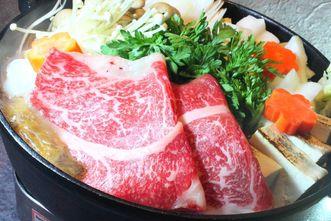
Sliced beef, vegetables, tofu, and shiitake mushrooms are cooked with a broth of soy sauce, sugar and sake in a pot.
We eat the cooked items with a beaten raw egg.
● しゃぶしゃぶ Shabu shabu
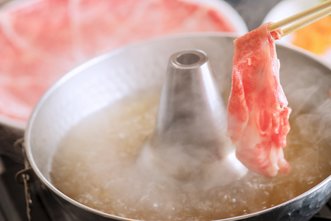
A Japanese dish of sliced meat, especially beef, boiled rapidly with vegetables and sauce.
● 麺 Noodle Dishes
・ らーめん Ramen
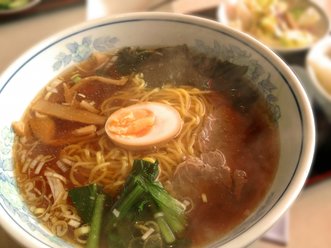
Ramen is a kind of Japanese noodles. It’s usually served with various ramen toppings and then seasoned with soy sauce and with slices of roast pork.
豚骨ラーメン Tonkotu Ramen: Pork broth ramen
塩ラーメン Shio Ramen: Ramen seasoned with salt
みそラーメン Miso Ramen: Ramen seasoned with miso
・ 蕎麦 Soba
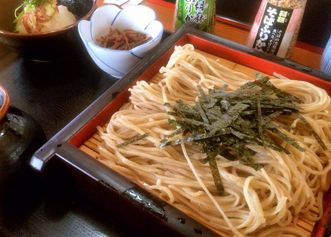
Soba is native Japanese noodles made of buckwheat flour or a mixture of buckwheat and wheat flour. Soba is about as thick as spaghetti, and can be served either hot or cold and with various toppings of choice.
Soba dipping sauce is made with bonito broth, soy sauce, sweet sake and some sugar.
・ うどん Udon
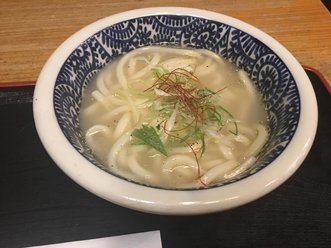
Udon is a type of Japanese noodles made of wheat flour.
Udon is thicker than soba and is also served either hot or cold and with various toppings, such as fried tofu (kitsune udon), tempura (tempura udon), and mountain vegetables (sansai udon).
・ そうめん Somen
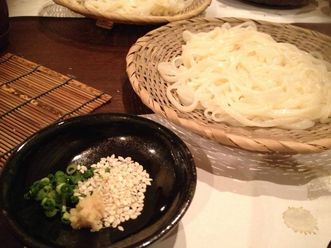
Like Udon noodles, somen is a Japanese noodles also made of wheat flour, but they are much thinner than Udon and Soba.
Somen are usually eaten cold and are considered a summer specialty.
・ 焼きそば Yakisoba
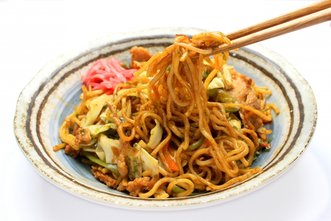
Yakisoba is grilled or fried Chinese style noodles mixed with pieces of meat, cabbage, carrots, or other vegetables and then garnished with red ginger. It is a popular festival food.
・ つけ麺 Tsukemen
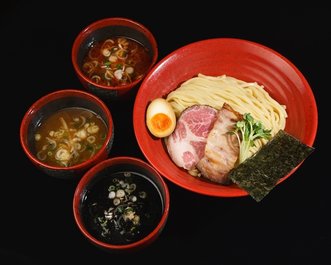
Tsukemen (Dipping noddles) is similar to ramen but the noodles and broth are in separate bowls which you dip and eat like soba.
● 焼き鳥 Yakitori
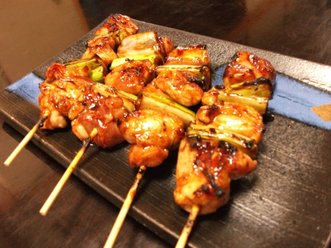
Yakitori are skewered charcoal grilled chicken pieces seasoned with salt or sauce.
Nearly every part of the chicken is on the menu, all grilled to perfection, seasoned with either shio (salt) or tare (a sweet soy sauce-based sauce).
● とんかつ Tonkatsu

Tonkatsu is breaded and deep-fried pork. Especially when it’s kuro-buta (Berkshire pork) from Kagoshima, it will melt-in-your-mouth it’s so tender, and it is even served with a side of miso soup and a mountain of shredded cabbage.
● 丼ぶり Donburi
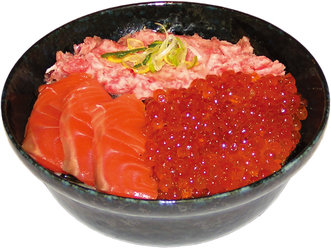
Donburi refers to a bowl of plain cooked rice with some other food on top of it. Donburi is served at specialty restaurants, but they are also common dishes that can be found at all kinds of restaurants menus across Japan.
Some of the most popular varieties are gyudon (stewed beef), katsudon (tonkatsu), tendon (tempura), oyakodon (chicken and egg), tekkadon (maguro), and kaisendon (raw seafood).
● お好み焼き Okonimiyaki

Okonomiyaki is a kind of Japanese-style savoury pancake or pizza. It is usually made from eggs, flour, water, shredded cabbage, yam and some meat.
There are two styles of cooking okonomiyaki, Osaka style and Hiroshima style.
In Osaka style, we scramble every ingredient and fry on the griddle.
In Hiroshima style, we pile up each ingredient in order, and then usually sandwich noodles between them.
● おでん Oden
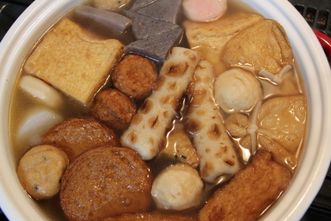
The ingredients (potatoes, hard-boiled eggs, konyaku, Japanese radish, Hanpen and so on) are boiled together in a large pot with a soup seasoned with soy sauce and dried bonito flakes.
Hot mustard goes really well with oden.
● うな重 Unaju
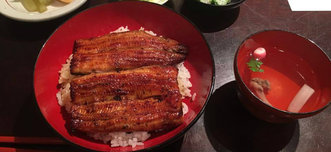
Unaju is a dish that the eel is sliced open, brushed with a salty sweet sauce, broiled and finally served on a hot cooked rice.
They often serve Unaju with multiple layers of the cooked rice and the Unagi strips.
● からあげ Karaage

‘Karaage’ is a Japanese fried meat (usually chicken) which you cover in flour and deep fry in oil.
● 串かつ Kushikatsu
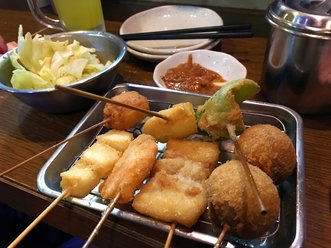
Its origin is Shinsekai in Osaka. “Kushikatsu” consists of meat and seasonal vegetables cut in mouthful portions. These are skewered on bamboo Kushi. Dipped is egg flour and panko or bread crumbs and deep fried in vegetable oil. Served straight or with shredded cabbage and miso soup which is a traditional Japanese soup consisting of a stock called dashi.
● カレーライス Curry rice
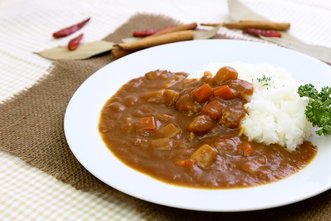
It is a Japanese curry with rice. Curry is one of the most popular dishes in Japan, along with ramen noodles and sushi. The Japanese have developed their own original style of curry using stir-fried carrots, onions, potatoes and meat mixed with curry roux.
● 漬物 Tsukemono
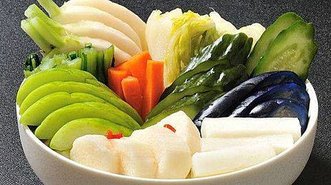
Tsukemono is a Japanese-style pickles made from Chinese cabbage, Japanese radish, cucumber and other vegetables which are pickled and preserved in a variety of ways including using salt, salted rice-bran paste, and fermented soybean paste called miso.
● 和菓子 Wagashi
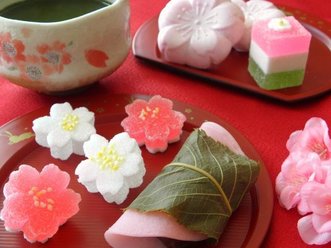
Wagashi is one of Japanese traditional confectioneries typically made of rice, wheat, red bean paste, and sugar etc. It usually served with Japanese green tea.
● 納豆 Nattou

Natto is a traditional Japanese food made from fermented soybeans, usually eaten with soy sauce and karashi mustard.
● 枝豆 Edamame
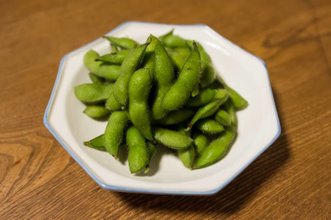
Edamame is a boiled salted green soybeans, typically served as a snack or appetizer.
● 海苔 Nori
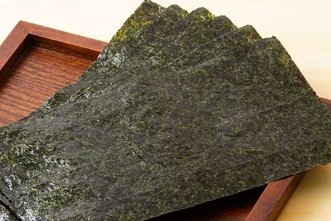
Nori is a seaweed sheets.
● 梅干し Umeboshi
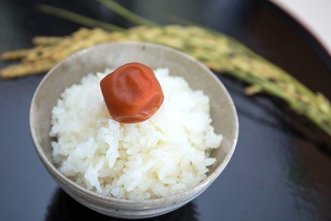
Umeboshi is a pickled Japanese plum common in Japan. Umeboshi taste very salty and sour.
● 鍋 Nabe
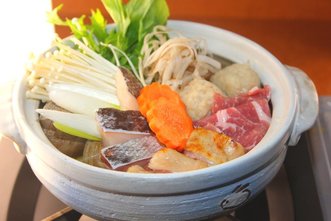
Nabe Cuisine is a type of Japanese cuisine cooked and served in a large hot-pot. The pot is placed on a small stove or heating plate on the table.
● おにぎり Onigiri

Onigiri is a rice ball, made from white rice formed into triangular or cylindrical shapes and often wrapped in seaweed. An onigiri is filled with many different ingredients such as pickled ume, tuna, salted salmon, or any other salty or sour ingredient as a natural preservative.
● みそ汁 Miso-Shiro
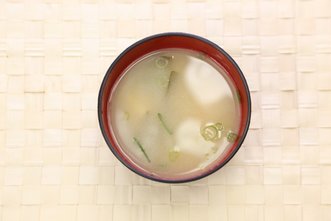
Miso-Shiro (Miso soup) is a Japanese traditional soup made from soybean paste.
Japanese Drink
● 日本茶 Nihon-Chya
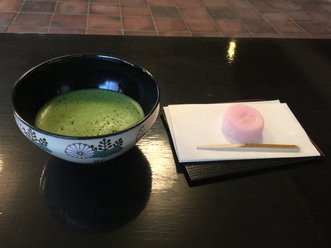
It is a Green Tea made from unfermented leaves that is pale in color and slightly bitter in flavor, produced mainly in China and Japan.
● 日本酒 Sake (Japanese Alcohol)

Sake is a fermented alcohol beverage made from rice.
● 焼酎 Shochu
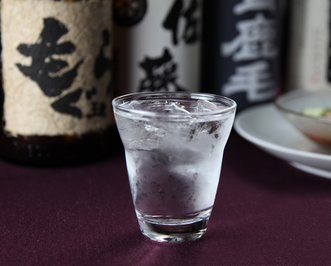
“Shochu” is a Japanese distilled beverage. It is made of rice or buckwheat and some are also flavored with potatoes, soba, plum leaf or black sugar and other ingrident. There are many ways to drink shochu.

